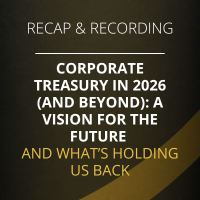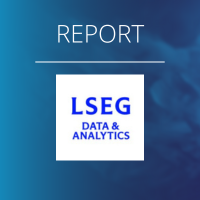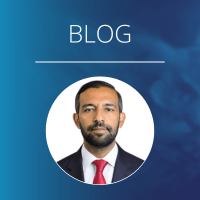RECORDING
Our panelists noted that many corporates still rely mostly on manual and semi-automated cash forecasting, but AI adoption is growing to improve efficiency, accuracy, and operational decisions. They stressed that AI works best when it combines data collection, real-time forecasting, and scenario analysis, though challenges with data quality, transparency, and human oversight remain important. The discussion suggested a future where AI handles repetitive tasks, freeing treasury professionals to focus on strategic and creative work.
Risk management and human judgment were central, with emphasis on keeping human oversight alongside AI processes. Companies adopting AI should start small, collaborate with the right experts, and embed security and controls in AI solutions to limit risks. The treasury function is expected to become more integrated and adaptive with AI, but will continue to rely heavily on human expertise, communication, and decision-making.
The session featured insights from the following lineup of speakers:
- 🎙️François De Witte, Seasoned Interim Treasurer & treasuryXL Ambassador,
- 🎙️Sefi Itzkovich| Co-Founder & CTO at Panax
- 🎙️Adriana Ciuche | Experienced Treasury Professional
- 🎙️Pieter de Kiewit | treasuryXL ambassador & Managing Director of Treasurer Search, will be the moderator guiding the discussion.
Key Takeaways
Adriana Ciuche (treasuryXL):
“Cash flow forecasting is really… a manual. Close to zero automation.“
Here, Adriana highlights how much of cash forecasting still relies on manual work.
François de Witte (treasuryXL):
“Automated processes like accounts receivable and payable impact cash flow forecasting significantly”
He points out that automation in other areas of finance directly improves forecasting.
Sefi Itzkovich (Panax):
“The main start is basically when you try to embed it and not use it as an external tool.”
He emphasizes embedding AI directly into treasury workflows for real impact.
François de Witte (treasuryXL):
“AI is an enabler, but whatever happens, you will need some human judgment.”
François stresses that humans remain critical alongside AI-driven processes.
Adriana Ciuche (treasuryXL):
“The human role will stay there. Just transformed.”
Adriana notes that AI changes tasks but doesn’t replace human expertise.
Sefi Itzkovich (Panax):
“Security, permission roles, and auditing will be baked into AI systems”
Sefi notes the importance of built-in governance and controls.
Sefi Itzkovich (Panax):
“The real value isn’t just about automating what you already do, but reimagining the process”
He highlights that AI should drive process innovation, not just efficiency.
Conclusion
The session underscored the transformative potential of AI in corporate treasury, highlighting both the opportunities for enhanced efficiency and the risks that require careful management. Human expertise remains critical in guiding AI outputs and ensuring transparency, compliance, and strategic relevance. As treasury functions evolve, professionals are encouraged to embrace AI thoughtfully, beginning with manageable steps and focusing on collaborative human-machine workflows.
Question for you: How will your treasury team balance AI adoption with maintaining critical human oversight, and what steps will you take to responsibly integrate AI in your cash management processes?
We hope to see you in a next session!











